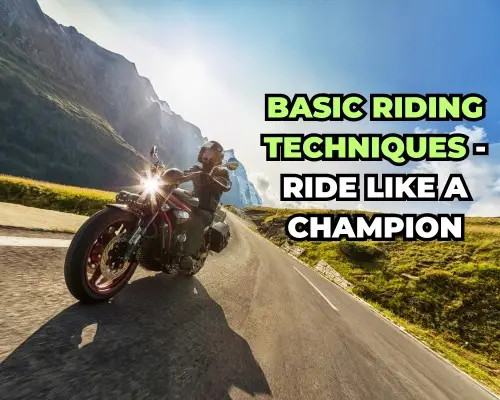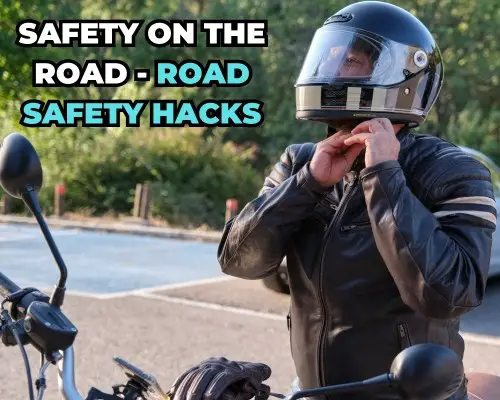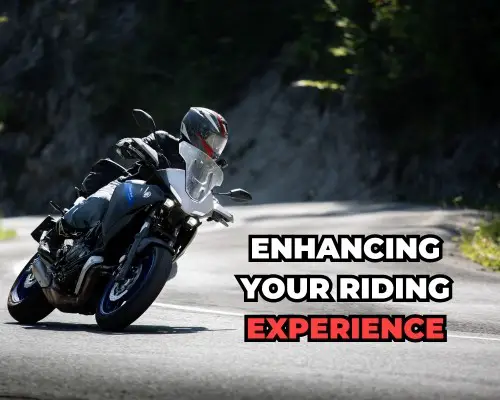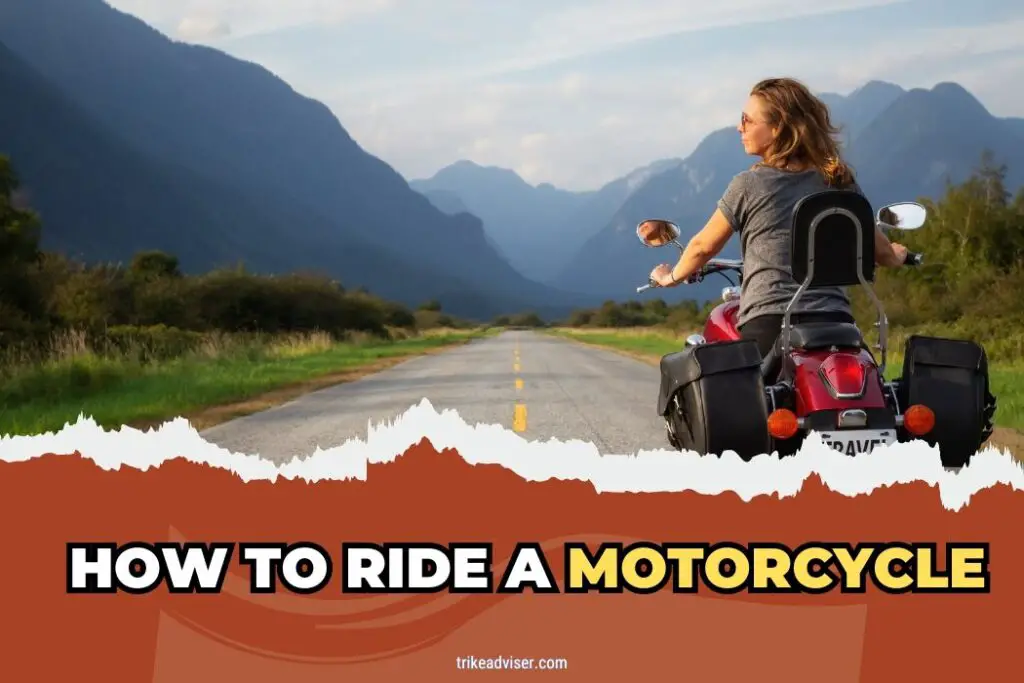Learning to ride a motorcycle? It seems thrilling, yet daunting. Everyone seems to have advice. What’s essential? Let’s simplify. Remember your first bicycle ride? The excitement, the fear? Motorcycle riding reignites those feelings.
Balance and control matter more than speed at first. Gear up; safety is key. Think helmets, gloves, jackets. They’re your armor. Beginners often overlook this.

Starting is often the hardest. Clutch control feels foreign. Stalling? Guaranteed. It’s part of the process. Turning and stopping requires practice. Sounds basic, but they’re lifesavers.
Roads aren’t just pavements; they’re filled with lessons. Each ride teaches something new. Ready to transform fear into confidence? These tips aren’t mere suggestions; they’re the foundation for every journey ahead. The road awaits.
Skip the Car! I Slashed My Costs by Learning to Ride a Motorcycle (Here’s How)

Complete a Basic Safety Check Before You Ride
Ever had that moment when something small prevented a big problem? That’s your safety check. Lights, brake lights, indicators, fuel gauges—each plays a crucial role.
Checking your parachute before a skydive is analogous to that. A 2019 study found that almost 40% of motorbike failures might be avoided with routine maintenance checkups. Don’t skip this; it’s the difference between a great ride and a call for help.
Remember the Rules of the Road
The road’s rules are its rhythm. Knowing them keeps you in harmony with the flow. The Highway Code changes, reflecting new safety insights.
Did you know that as of recent updates, motorcyclists may have more leeway in lane filtering? Understanding these nuances can save you from a tight spot.
Practice Makes Perfect
Think back to your first ride. Awkward? Perhaps a bit terrifying? Now imagine the ease after 100 rides. Practice isn’t just repetition; it’s refining your dialogue with the bike.
The difference between handling a sudden storm confidently or panicking could be those extra hours spent on wet roads practicing. Regular riding transforms anxiety into assurance.
Leave Space When Following Vehicles
This isn’t just about safety; it’s about giving yourself time to enjoy the ride. A safe distance means you have the space to react, to breathe, to think.
Remember, at 60 mph, you’re covering 88 feet per second. Space is your buffer against the unpredictable.
Get to Know Your Motorbike
Your motorcycle is a reflection of your riding style. Understanding its quirks and features makes you two a unit, moving seamlessly.
Did you know that familiarizing yourself with your bike’s maintenance can extend its lifespan by years? It’s about creating a bond, where you know its needs before it even speaks.
Position Yourself Wisely
Where you’re viewed matters just as much as where you are. Being observant or ignored might be determined by one’s strategic placement.
Motorcyclists who are positioned in the left third of the lane are more visible to oncoming cars, according to studies. It’s like choosing the best seat in a café; find where you have the best view and are best seen.
Stay Calm
Riding is as much a mental game as it is physical. Stress can cloud your judgment, and slow your reactions. Yet, calmness clarifies.
It makes you more resilient, and more ready. It’s the deep breath before the storm, that keeps you centered when everything else is not.
Invest in Quality Gear
Ever heard the saying, “Dress for the slide, not the ride”? Each piece of gear is a pledge to your future self.
Helmets reduce the risk of head injury by 69%. Gloves save your hands, the first point of contact in a fall. Your gear is your commitment to coming home safely.
Take a Riding Course
Imagine you’re given a map of a foreign city. That’s what a riding course offers—a guide to navigating safely.
The shocking statistic is that riders who have never had formal training are 90% more likely to get in an accident. These classes teach you how to survive as well as how to ride.
Basic Riding Techniques – Ride Like a Champion

Riding a motorcycle is similar to going on a mission. Gaining mastery over each skill opens the door to new experiences.
However, the bond you have with your machine is more important than the rush. Let’s hone those fundamentals using a combination of real-world insight and helpful guidance.
The Fundamentals of Motorcycle Control
Throttle Control
The Heartbeat of Your Ride: Think of throttle control as the rhythm of your ride. It’s about finesse, not force. I learned this the hard way, on a winding mountain road, where too much throttle had me grappling for control.
Remember, smooth throttle application is like breathing life into your journey, ensuring each motion is deliberate and controlled.
Clutch Control
Dance with the Clutch: The clutch is your dance partner in the tango of riding. It’s about feeling its rhythm, knowing when to lead and when to follow.
On a bustling city street, mastering the clutch felt like learning a secret language, one that allowed me to glide through traffic with ease and grace.
Braking
A Balancing Act: Effective braking is an art form. Using the rear and front brakes in harmony provides stability and safety.
I once avoided a close call by applying this knowledge, gently easing into the front brake while steadying with the rear, turning a potential crash into a controlled halt. It’s about understanding that each brake has a role and together, they save the day.
Balancing Act: Mastering Stability on Two Wheels
Weight Distribution
Becoming One with the Bike: Good balance starts with proper weight distribution. I remember riding through a gusty pass, where leaning into the wind, gripping the tank with my knees, turned a battle against the elements into a manageable, even exhilarating, experience. This unity with your bike is crucial for facing the unexpected with confidence.
Body Positioning
The Power of Posture: Your posture speaks volumes about your ride. Riding isn’t just physical; it’s psychological. Adopting a relaxed, fluid posture isn’t just about comfort; it’s about preparedness.
Like the time I navigated a sudden patch of gravel, my loose shoulders and flexible elbows allowed me to adjust swiftly, keeping me upright and in control.
The Art of Cornering: Techniques for Safe Turns
Cornering Skills
The Dance of Dynamics: The true elegance of riding is most apparent in cornering. It’s a delicate balance of counter-steering and leaning, of throttle management and vision.
My first perfect turn wasn’t just about technique; it was about feeling the road, understanding the bike, and executing with confidence. This harmony creates a smooth, exhilarating experience that’s both safe and thrilling.
Sharp Right Turns
Precision in Practice: Sharp right turns are a test of precision. It’s about control, not speed, from a stop. I discovered how to trust my bike, how to lean into turns rather than away from them, and how to focus my attention on my goals rather than my fears. This trust, this focus, turns daunting turns into triumphant twists.
Riding a motorcycle is more than a mode of transport; it’s a journey of continuous learning and experience. It’s about the subtle nuances that turn routine rides into tales of triumph.
Each ride, each turn, and each stop teaches you something new about your motorcycle, the road, and yourself. Embrace these lessons, and ride not just as a traveler, but as a true champion of the road.
Safety on the Road – Road Safety Hacks

Navigating the road on two wheels is an adventure, a feeling of freedom. Yet, with great power comes great responsibility.
The road demands respect, and safety becomes your passport to countless journeys. Let’s dive into the essentials that pave the way for a safer ride.
Defensive Riding: Anticipating Hazards Before They Happen
Constant Vigilance
- Eyes Wide Open: Defensive riding is about foreseeing potential dangers. It’s scanning every corner, every intersection, anticipating what others might do. Imagine every vehicle has a story, a next move. Your job? Reading it before it unfolds.
This anticipation saved me when a car unexpectedly swerved into my lane, a moment etched in memory, reminding me of the vigilance the road demands.
Situational Awareness
- The Road’s Pulse: Keeping an eye on mirrors, monitoring road conditions, and predicting the unpredictable mark the essence of situational awareness.
It’s about sensing the rhythm of the road and staying two steps ahead. There’s a dance to it, a rhythm that, once mastered, becomes second nature, guiding you safely through the chaos.
Proactive Approach
- Master of Maneuvers: Using signals, maintaining safe distances, and always having an escape plan from the trifecta of a proactive approach. It’s not just about reacting; it’s about being steps ahead and planning your moves.
The first time I honked to alert a distracted driver, it wasn’t panic; it was preparation. Preparedness becomes your shield, your guardian on every ride.
Emergency Maneuvers: Quick Stops and Evasive Actions
Quick Stops
- The Art of Braking: Mastering quick stops is crucial. It’s about pressing the brake with precision, not panic, and bringing your bike to a halt safely. Practice makes perfect, turning emergency stops into a controlled reflex.
The day my quick stop prevented a crash, it wasn’t luck; it was countless hours of practice, of preparing for the moment I’d need it most.
Evasive Actions
- Swift and Sure: Evasive maneuvers are your ace in the hole. Swerving safely, changing lanes with agility when danger looms—it’s about agility, about choosing safety over stubbornness. Learning to swerve correctly was a turning point, transforming potential hazards into mere obstacles on my journey.
The Importance of Riding Sober: Understanding the Risks
Avoid Riding Under the Influence
- Clarity Over Chaos: Sobriety isn’t just a choice; it’s a commitment to safety. Alcohol, drugs, even fatigue blur your judgment, slow your reactions.
Riding requires clarity, a sharpness of mind that substances dull. The risks are too high, the stakes too real. It’s a truth learned from hearing too many stories that ended in silence.
Safety Precautions
- Preparation and Prevention: Ensuring you’re well-rested and alert is non-negotiable. Sobriety on the road is your best defense, enabling quick thinking and swift reactions.
The clarity of a sober mind is the difference between a close call and a call you can’t take back.
Enhancing Your Riding Experience

Riding a motorcycle is an extremely intimate experience rather than just a way to get about. It’s about using the bike as an extension of yourself, experiencing every turn and acceleration.
To improve your riding, you should become more aware of the capabilities of your bike and connect with a larger pool of information. Let’s explore how performance upgrades and continuous learning can transform your ride into something extraordinary.
Upgrading Your Motorcycle: Performance and Customization
Performance Enhancements
Unleashing Potential: Think of your motorcycle as a canvas. Performance enhancements, including fine-tuning the suspension or improving the exhaust system, are improvements rather than alterations.
They adjust your ride so that the features of your bike match your goals. After installing a high-performance exhaust, the difference wasn’t just auditory; it was felt—each ride more exhilarating than the last.
Customization Options
A Personal Touch: Customization is where your motorcycle truly becomes yours. Adjusting the seat for comfort, changing handlebars for better control, or choosing a paint job that reflects your style.
These choices don’t just affect aesthetics; they enhance your connection with your bike. When I customized my handlebars, it wasn’t just for looks; it transformed my riding posture, making every journey more enjoyable.
Continuing Education: Advanced Courses and Community Learning
Advanced Riding Courses
Skill Refinement: Advanced riding courses are your next level. They push boundaries, teaching techniques like trail braking or advanced maneuvers.
But it’s more than skill—it’s confidence. Completing an advanced course didn’t just make me faster or more agile; it made me smarter, more in tune with every aspect of riding.
Community Learning
Shared Wisdom: The riding community is an invaluable resource. Engaging with experienced riders and mentors opens up a wellspring of knowledge.
It’s about shared experiences, lessons learned, and the nuances of riding that you won’t find in any manual.
My first group ride was eye-opening, not just for the camaraderie but for the shared wisdom, enriching my riding experience beyond measure.
Enhancing your riding experience is a journey of continuous improvement and discovery. It’s about making each ride better than the last, through personalization, advanced skills, and the shared wisdom of the community.
It transforms riding from a simple activity to a profound expression of freedom and individuality. Every upgrade, every lesson learned, is a step toward not just being a rider, but embodying the spirit of the ride.
As an Amazon Associate, I earn from qualifying purchases, at no additional cost to you. Read Our Affiliate Disclosure.

